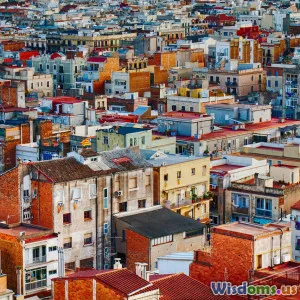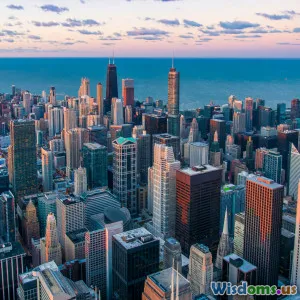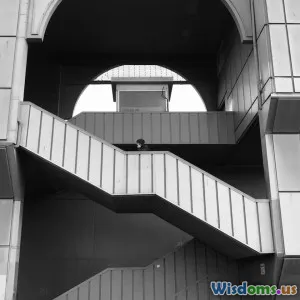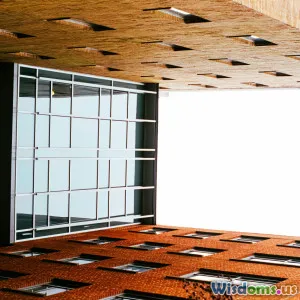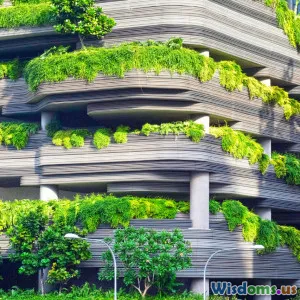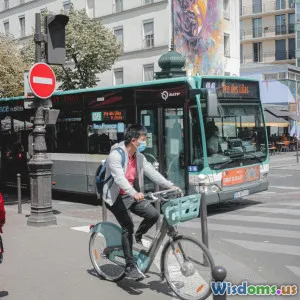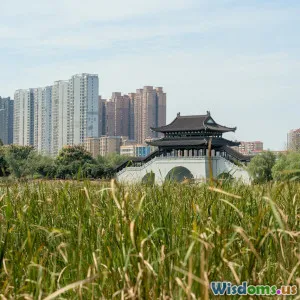
How Do City Parks Shape Urban Livability
9 min read Explore how city parks transform urban life by enhancing health, community, environment, and economy, shaping cities into vibrant, livable spaces for all. (0 Reviews)
How Do City Parks Shape Urban Livability?
Urban areas are often perceived as concrete jungles—where pollution, noise, and crowded streets seem unavoidable. Yet, city parks serve as vital green lungs and social hubs amid this urban sprawl. But how exactly do these green spaces shape the quality of life in cities? In this comprehensive exploration, we delve into the multifaceted role of city parks in redefining urban livability, supported by data, expert insights, and real-world examples.
The Vital Role of Parks in Urban Settings
City parks are more than patches of greenery—they are integral to the physical, environmental, social, and economic fabrics that make cities livable and resilient.
Health and Well-Being: Green Spaces as a Prescription for Urban Life
At a fundamental level, city parks provide spaces for recreation and physical activity, reducing sedentary lifestyles. According to the World Health Organization, insufficient physical activity is a leading risk factor for global mortality. Parks encourage walking, jogging, cycling, and sports, facilitating healthier urban populations.
A 2018 study published in the "Journal of Environmental Psychology" found that residents living near parks reported lower stress levels and improved mental health. In the bustling city of Singapore, extensive urban parks and green corridors have not only reduced urban heat stress but also encouraged outdoor activities that bolster residents' physical and psychological health.
Environmental Benefits: Parks Combat Urban Challenges
City parks function as crucial ecosystems that mitigate environmental issues such as air pollution, urban heat islands, and biodiversity loss. Trees and vegetation in parks absorb pollutants, improve air quality, and reduce noise pollution.
For instance, New York City's extensive park system including Central Park works as an urban oasis absorbing carbon dioxide and lowering surrounding temperatures. Research published by the U.S. Forest Service suggests that trees in urban parks can reduce summer temperatures by up to 7°F (4°C), indirectly decreasing energy consumption by reducing air conditioning needs.
Furthermore, parks help manage stormwater runoff, reducing flooding through natural water absorption. Cities like Portland, Oregon, have integrated green parks into their urban planning to enhance resilience against increasing rain intensity caused by climate change.
Social Cohesion: Parks as Community Anchors
Beyond physical health, parks create spaces where diverse communities converge, fostering social capital and cohesion. Jane Jacobs famously emphasized the importance of sidewalks and parks as vital "eyes on the street" fostering safety and interaction.
Urban parks host cultural events, markets, and festivals that celebrate a city’s diversity and heritage. For example, London's Hyde Park annually plays host to concerts and the vibrant Notting Hill Carnival, vital cultural gatherings that promote inclusion.
In marginalized neighborhoods, parks often serve as neutral ground promoting interaction among different socioeconomic groups. The Trust for Public Land remarks that well-designed parks can reduce crime rates by providing safe places and encouraging legitimate activity.
Economic Impacts: Parks Boost Urban Prosperity
Parks influence economic vitality in multiple ways, from increasing nearby property values to attracting tourism. A study from the Lincoln Institute of Land Policy reported that properties within 1,000 feet of a park saw an average value increase of 8-20%, demonstrating the tangible financial benefit parks provide to households and cities.
Moreover, vibrant urban parks can attract businesses and talent. Montreal's Mount Royal Park contributes to the city's appeal as a place to live and work, ranking it consistently among the world's top cities for quality of life.
City parks also generate employment opportunities, from maintenance crews to event coordinators, and spur small businesses around park entrances, such as cafes and rental services.
Case Studies: Parks Transforming Urban Experiences
Central Park, New York City: An Urban Legacy
Central Park, spanning over 840 acres, stands as the archetype of transformative urban parks worldwide. Designed in the 19th century to create a democratic park space amid a rapidly industrializing city, Central Park today draws over 40 million visitors annually.
Its impact goes beyond recreation—it is a wildlife refuge, a cultural venue, and a green sanctuary illustrating how park design can balance urban pressures with nature.
Melbourne's Green Network: Integrated Urban Planning
Melbourne, Australia, exemplifies integration of green spaces with urban development. Its extensive network of parks and linear green corridors connects neighborhoods, supports cycling and walking, and promotes continual biodiversity in the city center.
This approach has led Melbourne to be recognized repeatedly as one of the world’s most livable cities, proving that parks’ scale and connectivity matter deeply.
Medellín, Colombia: Parks Driving Social Change
Medellín's innovative urban park projects, including library parks and interconnected public spaces, have played a key role in transforming violence-plagued neighborhoods into safe, thriving communities.
These parks offer more than green respite—they provide educational facilities, art spaces, and meeting points that foster social inclusion and civic pride.
Challenges and the Future of Urban Parks
Accessibility and Equity
Despite benefits, access to quality parks remains uneven, often correlating with income and race. A report by the National Recreation and Park Association found that low-income and minority neighborhoods tend to have fewer or lower-quality parks.
Addressing this requires intentional planning and investment to ensure that parks serve all urban residents, reducing disparities in livability.
Climate Adaptation and Sustainable Design
As cities face climate change, parks must evolve to act as green infrastructure—absorbing floodwaters, providing cooling shades, and supporting urban biodiversity.
Innovations like green roofs, rain gardens, and native wildflower meadows are increasingly incorporated into urban parks to fulfill these roles sustainably.
Community Engagement and Stewardship
Successful parks depend on community involvement. Engaging residents in planning, programming, and maintaining parks can deepen a sense of ownership and responsibility, leading to safer, better-used spaces.
Conclusion
City parks are indispensable pillars of urban livability, weaving together better health, environmental resilience, social unity, and economic growth. From the iconic Central Park to emerging urban green networks worldwide, parks prove that nature and city life can coexist harmoniously.
As cities grow and challenges mount, investing in accessible, multifunctional parks is not a luxury but a necessity for crafting vibrant, equitable, and sustainable urban futures. The green spaces that splash vitality into our concrete landscapes truly shape the soul and livability of cities—and by extension, the quality of life for millions.
“Parks are the heart of cities, pumping life, health, and joy into the built environment.” — Urban Ecologist
References
- World Health Organization. (2018). Physical activity factsheet.
- Wolf, K.L. (2003). Trees and business district preferences in Oregon. Journal of Arboriculture.
- The Lincoln Institute of Land Policy. (2020). The Economic Value of Parks.
- Trust for Public Land. Urban parks and social equity report.
- New York City Parks Department statistics.
- City of Melbourne strategic urban green space reports.
- Medellín urban renewal development studies.
Rate the Post
User Reviews
Popular Posts












